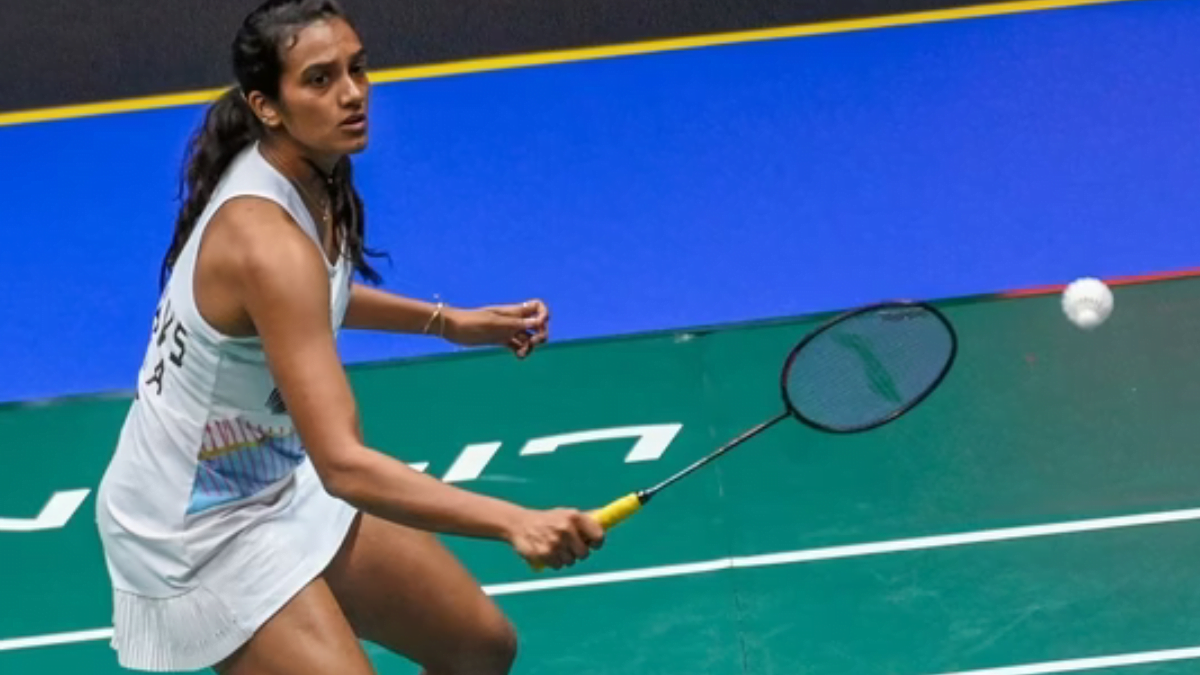The looming shadow of past triumphs is stretching its crippling grasp over PV Sindhu’s current performance, demanding an immediate overhaul and a genuine resurgence. A decade-long battle at the World Championships, marked by astonishing upsets since her bronze win in 2013 and the addition of two Olympic medals, now beckons for a force to awaken the 28-year-old athlete. She must be reminded that her potential extends well beyond, possibly reaching 32-33, with the capacity to seize multiple World titles—beyond the one earned in Basel.
The narrative shouldn’t conclude in the iconic Sindhu vs Okuhara rivalry with a fading demeanor. Trailing along, mirroring Nozomi Okuhara’s tempo and rhythm, and offering minimal originality in her approach, paints an inadequate picture. This saga of the World Championships requires a more fitting finale, one where Sindhu doesn’t merely react but takes charge, reviving her inspiration and determination. The solution lies within arm’s reach, embodied by her opponent across the court. Instead of scrambling tirelessly from corner to corner, retrieving every shuttle to eke out points, it’s time for a reawakening and rediscovery.
The question remains unanswered: did the 2019 gold medal completely satisfy Sindhu’s hunger for an intense battle? However, her attacks lacked the sting and precision required, and her defensive play lacked the tenacity needed to execute that crucial, pinpoint shot. This deficiency became evident in her match against Okuhara, where she found herself trapped in a 21-14, 21-14 struggle on Tuesday. In stark contrast to her dominating 21-7, 21-7 victory and mindset in the Basel final that secured her the gold, Sindhu’s performance in her first match at Copenhagen seemed lackluster and distant.
While reflecting on the seventh anniversary of her 2016 Olympic silver might provide a boost to her morale, it also signaled a concerning attachment to the past—a state of mind and body seemingly stuck. As she embarked on the challenging journey of the 2023 World Championship campaign, her focus seemed divided, possibly hindering her present potential.
Both Okuhara and the Indian contender entered the Round of 32 in the Copenhagen World Championships with a difficult year of faltering form behind them. However, it was solely the Japanese player who exhibited the determination to let go of her 2017 World title, flip the page, and quite literally lower her head in a relentless pursuit—lunging and retrieving tirelessly to revive her previously victorious and combative style of play. Her commitment to embarking anew on the journey for a fresh goal was evident.
Hailing from Nagano, the Japanese athlete had secured the World No. 1 position in 2019 but had since been shackled and hindered by injuries for consecutive seasons. Yet, on her comeback this season, Okuhara showed up with a readiness to endure extended court time. It’s truly remarkable how the 5’2” player, much like Yamaguchi, manages to cover the court astonishingly well, employing an elevated shuttle game that involves leaping and contorting to strike the shuttle even when it’s positioned well behind her head—repeating this feat point after punishing point, even at the age of 28.
Although Sindhu’s shots weren’t excessively forceful, her predictable Plan A, devoid of any other strategies, made Okuhara race across the court to reach diagonal corners and cover both flanks at the net. Okuhara’s willingness to invest in this level of hard work visibly frustrated Sindhu, leading to her conceding errors consistently.
Okuhara followed her customary routine – exchanging words with herself before stepping onto the court, a respectful nod, and then the full-stretch lunge, setting the stage for what lay ahead. On the other hand, Sindhu initiated the match with a cross drop winner, but her subsequent angled shots lacked accuracy, often finding the net instead. Okuhara possessed a limited number of outright kill shots, although they proved sufficient since Sindhu’s attacks lacked both power and precision from the opposite side of the net. Employing her signature high serves and tosses, Okuhara effectively neutralized Sindhu. This tactic, combined with Okuhara’s capability to crouch low in stretched-out defense, allowed her to gain control over extended rallies, even as early as 4-3 in the opening game.
The notable instance when Sindhu utilized her height advantage to execute towering jump smashes that turned into sharp kills was during the Rio Games semifinal. However, since then, Okuhara had shifted to deploying high tosses and unreturnable high lifts, countering Sindhu’s aerial attacks and wearing down her long limbs. Failing to find openings within the court due to Okuhara’s heroic defense, Sindhu was forced to aim for the lines, where her accuracy faltered. Sindhu struggled to execute low pickups without hitting the net, and her pushes often veered too long or wide, making it difficult for her to control midcourt exchanges. Okuhara’s strategy was simple: extend the rallies, place her cross drops accurately, and capitalize on inevitable errors stemming from Sindhu’s defeated wild swings, ultimately securing the opening set 21-14.
Sindhu’s sole initiative came at the beginning of the second set, as she introduced a variation in her serves, momentarily unsettling Okuhara and causing her to fall behind 0-9. However, Okuhara swiftly adapted to Sindhu’s tactic and regained momentum, narrowing the deficit to just two points at 9-11 before the break. The sluggish court conditions demanded that Sindhu regain her past power-driven approach and uphold her defensive intensity, both of which she struggled to deliver. When the match slipped from her grasp, she attempted to inject half-hearted pace into her shots, but even that resolve dwindled as Okuhara maintained her unwavering stance.



